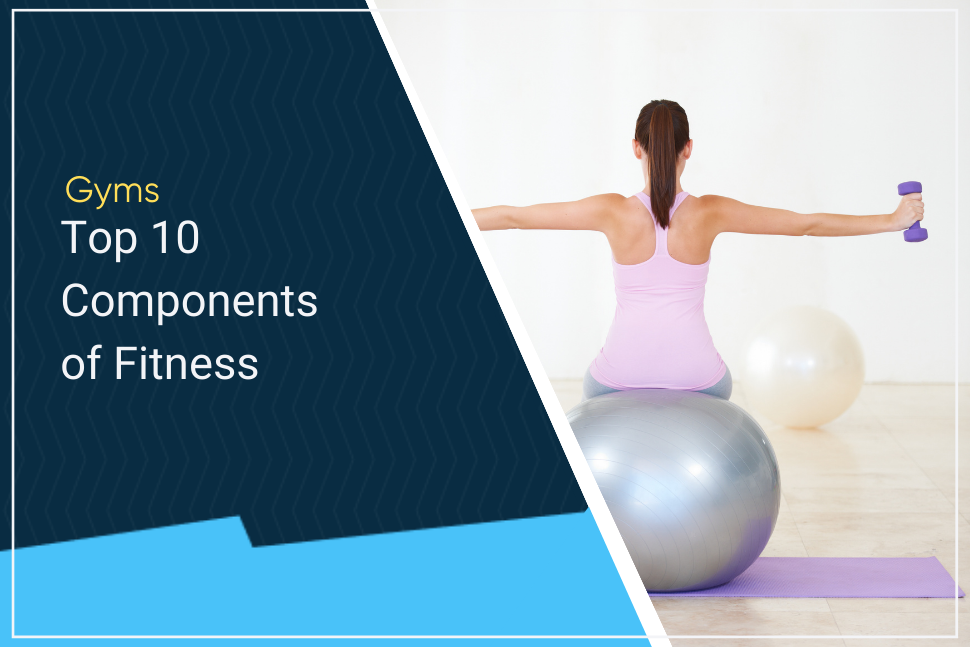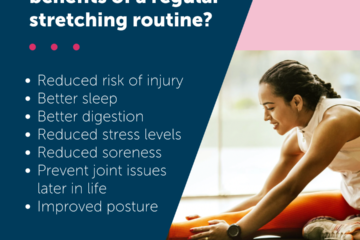Fitness generally refers to the state of being healthy, while physical fitness specifically focuses on the ability to perform physical activities. Physical fitness is a component of overall fitness, which includes mental and emotional well-being.
Exploring the nuances between fitness and physical fitness unveils a world where health transcends the physical realm. Many assume these terms are interchangeable, yet they hold distinct meanings for health enthusiasts and professionals alike. Embracing a holistic approach, fitness encompasses the harmony of body and mind, highlighting the importance of nutrition, sleep, stress management, and emotional balance.
In contrast, physical fitness zeroes in on the body’s mechanics—its strength, endurance, flexibility, and composition. It measures how well the body performs in sports and daily tasks, requiring regular exercise to maintain optimal function. This understanding is not only crucial for individuals seeking a healthy lifestyle but also shapes the foundation for training regimens and wellness programs aiming at comprehensive health enhancement.

Credit: www.researchgate.net
Fitness Versus Physical Fitness
Exploring the concepts of fitness and physical fitness reveals subtle differences.
Core Definitions
The term ‘fitness’ often concerns overall well-being.
It includes mental, emotional, and social health.
Physical fitness, on the other hand, focuses on the body.
It describes the ability to perform physical tasks.
Origins And Evolution Of The Terms
The origin of ‘fitness’ comes from the Old English ‘fitt’, meaning ‘suitable’.
‘Physical fitness’ emerged in the early 20th century.
It gained importance with the rise of sports science.
Today, physical fitness pinpoints attributes like strength, endurance, and flexibility.
Let’s break down the specifics between these terms:
| Fitness | Physical Fitness |
|---|---|
| Encompasses mental and social health | Centers on the physical capacity |
| Broader concept | More concrete and measurable |
| Qualitative | Quantitative |
- Fitness is about lifestyle choices.
- Physical fitness is about physical performance.
- Assessing fitness looks at many aspects.
- Assessing physical fitness often involves tests.
Components Of Physical Fitness
Understanding the Components of Physical Fitness is key to maximizing workouts. These components offer a blueprint for achieving overall health and athletic performance. Each aspect contributes to how effectively the body performs in different types of physical activities. Learn about the core areas essential for peak physical condition.
Strength And Endurance
Strength refers to the power muscles can exert. It is vital for everyday tasks. Endurance measures how long the muscles perform. Together, they ensure activities like climbing stairs feel easy. Building strength and endurance often involves:
- Weight lifting
- Resistance training
- Bodyweight exercises
Flexibility And Balance
Flexibility relates to how muscles stretch. Good flexibility keeps the body agile and helps prevent injuries. Balance allows the body to stay stable, both when moving and still. Activities to improve flexibility and balance include:
- Yoga
- Stretching routines
- Tai Chi
Exploring Fitness Beyond The Physical
Exploring Fitness Beyond the Physical often shatters the common notion of fitness as merely a measure of one’s physical prowess. The concept of fitness extends well beyond muscle tone and cardiovascular endurance. It encapsulates aspects such as mental clarity, emotional stability, social interactions, and even spiritual fulfillment. These components intertwine to forge a holistic picture of health.
Mental And Emotional Wellness
Mental and emotional fitness plays a pivotal role in overall well-being. A healthy mind can uplift physical fitness, driving motivation and commitment. Conversely, poor mental health may dampen physical performance. Key elements of mental and emotional well-being include:
- Stress management – Essential for maintaining mental balance
- Positive thinking – Enhances mood and overall outlook
- Good sleep habits – Vital for cognitive function and recovery
Social And Spiritual Elements
Social fitness revolves around the ability to form meaningful connections with others. It entails clear communication, empathy, and active participation in community life. These social dynamics can influence one’s physical state.
Spiritual fitness, while personal and diverse, generally involves establishing a sense of purpose and aligning one’s actions with core values. Practices may involve:
| Practice | Purpose |
|---|---|
| Meditation | Fosters inner peace and clarity |
| Reflection | Encourages growth and self-awareness |
| Community service | Builds a sense of belonging and purpose |
Each facet of fitness enriches life, driving a person towards achieving a sound mind in a sound body.
Assessment Methods For Fitness Levels
Understanding how fit we are can be a puzzle. Luckily, several methods exist to gauge our fitness levels. These methods can show us where we stand. They can guide us on what to improve. Let’s dive into the exciting world of fitness assessments.
Standardized Tests And Benchmarks
Standardized tests offer a clear picture of fitness. They compare our abilities to set norms. This tells us how we measure up to others.
- Cardio tests: They check heart health and stamina.
- Strength tests: These assess muscle power.
- Flexibility measures: We see how limber we are.
- Body composition: It’s about fat versus muscle in our bodies.
Benchmarks are key milestones. They mark progress in our fitness journey. Meeting these goals shows improvement.
Self-assessment Tools
Not everyone can access formal tests. Self-assessment tools offer a DIY approach. We can use them to track our own progress.
- Fitness apps: Apps can track steps, heart rate, and more.
- Online calculators: They estimate our fitness levels.
- Activity logs: Keeping a diary of exercise can spot trends over time.
- Home tests: Simple exercises we can do without fancy gear.
Self-assessments should be regular. They keep our fitness goals on target.
Incorporating Fitness Into Lifestyle
Embracing fitness as part of daily life is a key step towards wellness.
Fitness is more than exercise. It’s a lifestyle choice and a commitment. Daily schedules can get hectic. Aligning fitness with everyday tasks keeps the body and mind healthy. It’s about finding the right balance and adapting.
Creating A Balanced Routine
Workouts should fit personal interests and schedules.
Identify exercises that are fun. Enjoyable activities make sticking to routines easier.
- Include variety like yoga, running, or swimming
- Allocate specific days for different workouts
- Mix high-intensity with low-impact exercises
Schedule rest days. Recovery is vital.
Overcoming Common Barriers
Obstacles can derail fitness goals. Acknowledge these barriers.
Lack of time is a frequent challenge.
- Short workouts can be effective
- Plan exercise like any other important activity
Boredom can affect motivation.
- Try new sports or fitness classes
- Join groups for social engagement
Maintain persistence even when results aren’t immediate.

Credit: www.planetfitness.com
Impact Of Technology On Fitness
With every passing year, technology reshapes the landscape of fitness. The blend of tech and physical activity opens up exciting avenues. It lets people track their progress with precision. It also engages them in their fitness journey like never before. This evolution is crucial. It changes how we approach and understand both fitness and physical fitness.
Fitness Tracking And Apps
Technology offers innovative tools for monitoring fitness. Fitness tracking comes to life through apps and wearables. These gadgets and applications work wonders:
- Step Counters: They motivate users to move more.
- Heart Rate Monitors: Show real-time cardio health.
- Sleep Trackers: Assess recovery through sleep quality.
Each app provides data that helps to tailor personal fitness goals. It brings a level of customization. That means workouts are effective and tailored to individual needs.
Virtual Training And Gamification
Virtual training has revolutionized the way we exercise. It brings the gym to your living room. It connects you with trainers across the globe. Here’s what this trend includes:
- Online Workouts: Allow training anytime, anywhere.
- Live Classes: Offer real-time feedback and support.
- Gaming Elements: Turn fitness into a fun activity.
Gamification adds a layer of competition. It uses points, levels, and challenges. This makes reaching fitness milestones fun and rewarding. It pushes people to stick to their workout routines more consistently.
Technology sets a new pace in achieving fitness goals. It makes fitness more accessible, measurable, and enjoyable. And as it continues to advance, the possibilities for fitness and physical fitness are endless. Welcome to the future of staying fit – right at the tips of your fingers!

Credit: gymdesk.com
Frequently Asked Questions For What Is The Difference Between Fitness And Physical Fitness
What Defines Fitness?
Fitness refers to a state of health and well-being where one’s physical capacities meet the demands of daily life with vigor and energy. It encompasses strength, endurance, and flexibility, along with the absence of disease.
How Is Physical Fitness Measured?
Physical fitness is typically measured through various fitness tests that assess components like cardiovascular endurance, muscle strength, flexibility, and body composition. These assessments help determine an individual’s fitness level.
Why Is Physical Fitness Important?
Physical fitness is vital for maintaining a healthy body weight, preventing chronic diseases, and improving overall mental health. It enhances one’s ability to perform daily tasks efficiently and with less fatigue.
Can Fitness Exist Without Gym Workouts?
Yes, fitness can be achieved through various activities like walking, cycling, swimming, or bodyweight exercises, which do not necessarily require gym equipment or a formal workout environment.
Conclusion
Understanding the nuances between fitness and physical fitness is key to optimizing your health journey. Both terms shape our overall well-being, yet they serve different roles. Fitness influences lifestyle choices; physical fitness hones bodily function. Embrace both for a balanced, healthy life.
Remember, your path to wellness is uniquely yours.



